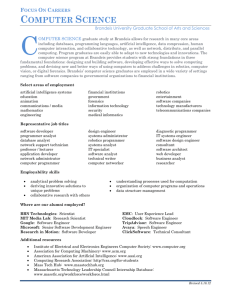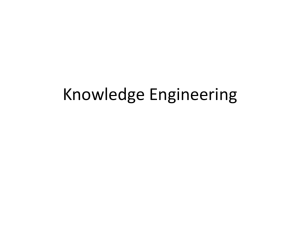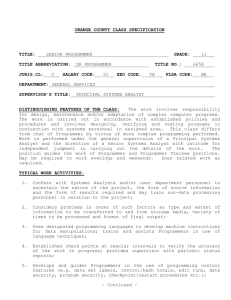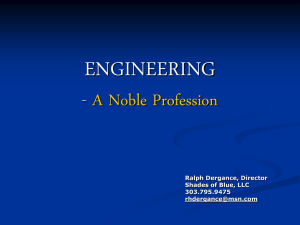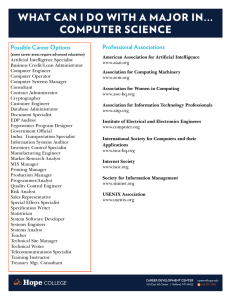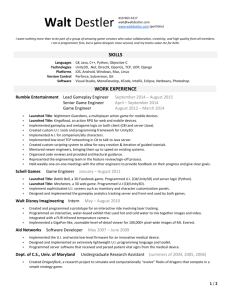People in Computing: IT Job Roles & Qualifications
advertisement
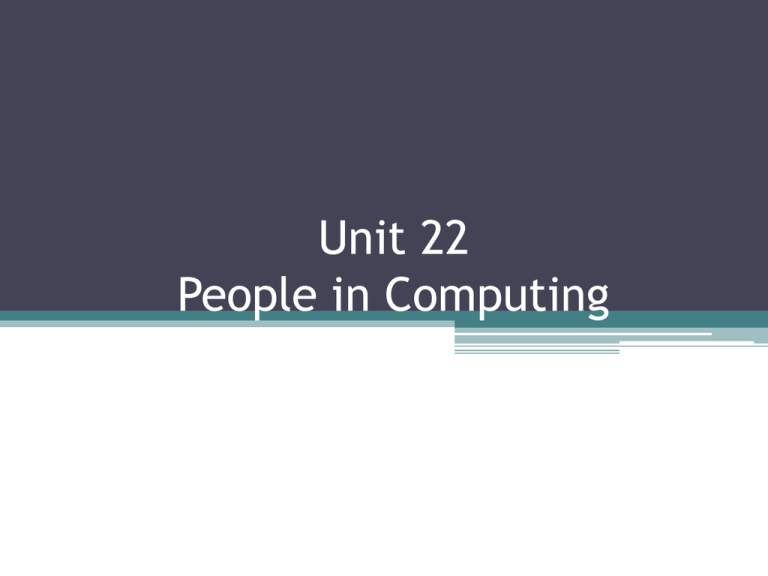
Unit 22 People in Computing Introduction • There is a wide range of jobs in computing and different titles are sometimes given to the same type of job. Jobs mentioned in this unit include: A Webmaster – a person who administers a Web server. A help-desk troubleshooter – a person who works as part of a telephone service that helps users solve problems that occur on computer systems. Introduction An application programmer – a person who writes applications programs (computer programs designed to be used for a particular purpose e.g. word processors, spreadsheets or database programs). A security specialist – a person who tests the security of networks systems and advices customers how to introduce and maintain security policies including: A. Setting up secure password systems. B. Installing firewalls. Introduction C. Keeping out hackers. D. Dealing with viruses. • A system programmer – a person who specializes in writing systems software A program or set of programs that are used to control the basic functions of a computer system e.g. operating systems programs Introduction • Being employed in any of these jobs requires the person to have particular formal qualifications, personal qualities and technical skills. Qualifications mentioned in this unit include: A. Standard grades in Math B. HNC in computing : this is a Higher National Certificate in computing including the study of HW and SW. this is a college education that can usually be obtained by a period of part-time study. Introduction C. HND in computing support : this is a Higher National Diploma in installing and maintaining and troubleshooting (to find and fix faults in a system) computing systems and training users. This is a higher college qualification that an HNC but not as high as a university degree. It usually requires a period of full-time study. Introduction • An IT (Information Technology) support engineer is a professional who provides help for computer users by designing, building and maintaining information technology systems (systems and equipment such as computers for dealing with information). • A support engineer might start out in their career by working on a help-desk ( a telephone service for helping users solve problems that occur on computer systems). Introduction • An IT manager manages projects, technology and people. An IT systems manager is responsible for developing and implementing computer software that supports the operations of the business. • Off-the-shelf-systems are ready made systems that are purchased from systems suppliers. Inhouse-systems are developed by the employees of the company. A university degree is usually required but necessarily in computing science (the study of computers and their use). The best qualification is experience. Introduction • A systems analyst studies systems in an organization and decides how to computerize them ( change the system into one controlled by computers). • They analyze requirements and report on options for using information technology. The study and practice of techniques or use of equipments for dealing with information Introduction • A software engineer/ designer produces the programs which control the internal operations of computers. • They use program libraries (sets of programmed functions that are made available for use by any program) to produce programs. • They also design, test and improve programs for a variety of purposes including computerThe production of technical designs and aided design and manufacture. the production of goods using machines controlled by computers Introduction • A computer services engineering technician is responsible for installation, maintenance and repair of computers and peripherals (associated equipment). • They install, test, troubleshoot, upgrade ( add components to improve the features or performance of a system) andthe carry outand routine largest most maintenance on HW, ranging fromtype PC’s powerful of to computer, a computer designed to be usually operated by a team mainframes used by one person at a time of professionals Introduction • A network support person or computer engineer maintains the link between PCs and workstations (powerful desktop computers used for work that requires a lot of processing e.g. graphic design) connected in a network ( a number of computers and peripheral devices connected together). • They use telecommunications (technology concerned with communications over long distances), software, electronic skills and knowledge of networking SW to troubleshoot systems. Introduction • This may involve work with the controlling SW, on the wiring, printed circuit boards (the electronic boards that hold the components of a circuit and connect them together), SW or microchips (small integrated electronic circuits) on a file server ( a powerful network computer that stores computer files and makes them available to users on a network), or on cables either within or outside the building. Introduction • An applications programmer writes application programs ( computer programs designed to be used for a particular purpose e.g. word processors, spreadsheets or database programs). Introduction • A systems support person is an analyst programmer – a person whose job is a combination of systems analysis and computer programming. • He is responsible for maintaining, updating (bring up-to-date i.e. change into the latest version) and modifying the SW used by the company. • Some specialize in systems SW (SW that handles the basic operation of the computers). Introduction • This involves the use of machine code (computer language that consists entirely of 1’s and 0’s) and specialized low-level computer languages (computer languages such as machine code or Assembly language, that is closer to the form that a computer understands than to that of a human language). Introduction • They may sort out problems encountered by users including amending an area of code ( text of a program or part of a program using a computer language) in the SW, retrieving files and data lost when a system crashes (fails suddenly and completely, usually referring to the failure of a hard disk).

